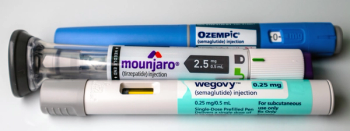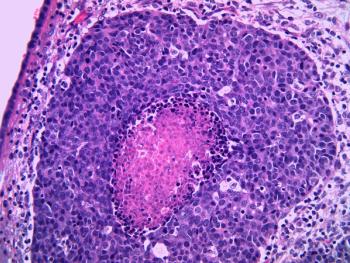Leg compression therapy was associated with decreased brain natriuretic peptide levels and improved symptoms in heart failure with preserved ejection faction (HFpEF), without any adverse events for patients with stable chronic heart failure (HF), according to results of a study published in International Journal of Cardiology: Heart and Vasculature. The study authors concluded that compression therapy is safe for those with stable chronic HF.
The study authors said that leg compression therapy with compression stockings can be used to improve venous and lymphatic dysfunction by enhancing lymphatic pump function. However, they added that there have been concerns regarding the safety in patients who have HF. Even though guidelines for venous leg ulcers lists compression stockings as a contraindication for HF, there is no mention of the possibility of worsening HF, the study authors said. The investigators said little is known about the safety and efficacy of this therapy for those with HF and aimed to evaluate the safety of leg compression therapy for those with stable HF.
3 Key Takeaways
- The study suggests that leg compression therapy, specifically using compression stockings, is associated with decreased brain natriuretic peptide levels and improved symptoms in patients with stable chronic heart failure (HF) and preserved ejection fraction (HFpEF).
- The findings indicate significant improvements in heart failure symptoms, including reduced edema and decreased brain natriuretic peptide levels, following 1 month of compression therapy.
- HFpEF was positively associated with edema improvement, suggesting that patients with HFpEF may particularly benefit from this intervention.
In the study, investigators included data from those with stable chronic HF who visited outpatient facilities at 3 centers. They received compression therapy through new compression stockings for managing chronic edema and preventing varicose veins, including without evident edema, from 2018 to 2021, according to the study authors. Individuals met 3 requirements, including previous hospitalization for HF or a brain natriuretic peptide level of more than 100 pg/dL, New York Heart Association (NYHA) classification of II or III, and no changes in oral medication, including dosage, from 1 year prior to 3 months after initiation from compression therapy. Patients undergoing hemodialysis were excluded, according to the study investigators.
The primary endpoint was the change in NYHA class at 1 month, according to the study authors. Investigators also evaluated the compression therapy on HF by measuring changes in brain natriuretic peptide levels at baseline, 1 month, and 3 months.
There were 101 individuals included in the study with a median age of 81 years and 62.4% female. Atrial fibrillation complications were present in 54.5% of individuals. Furthermore, the median left ventricle ejection fraction (LVEF) was 55% and median HFpEF was 55.4%, according to the study authors. Approximately 44.6% of patients had a NYHA classification of II and 55.4% had III.
Approximately 50.5% continued with compression therapy for the entire study duration, according to the study investigators. The authors noted that there were no cases of HF symptom deterioration, hospitalization, or need for adjustment in diuretic therapy in the 51 patients who completed the therapy. After 3 months, there was a higher LVEF in the continuation group compared to those who discontinued therapy, and there was a greater prevalence of HFpEF in the continuation group, according to the study authors.
At 1 month, investigators found that there were significant improvements in NYHA classification and pitting edema scale following compression therapy. Further, brain natriuretic peptide levels showed significant reductions. Hemoglobin and hematocrit levels increased and estimated plasma volume and estimated extracellular volume decreased. There was no significant change for estimated glomerular filtration rate, according to the investigators.
According to the results of the study, HFpEF was positively associated with edema improvement with an odds ratio of 11.7. There were no factors identified that contributed to improvements in NYHA classification.
For brain natriuretic peptide levels at 1 month, the proportion of female patients, atrial fibrillation prevalence, systolic blood pressure, and HFpEF were higher in the higher BNP reduction group compared to the lower reduction group. Additionally, study authors also said that the pitting edema scale was lower in higher reduction group. At 3 months, there were no significant differences from 1 month, but there was a significant reduction of brain natriuretic peptide levels from baseline.
For those who discontinued therapy between 1 and 3 months, the reduction at 1 month increased again at 3 months, according to the results of the study.
Reference
Urbanek T, Juśko M, Kuczmik WB. Compression therapy for leg oedema in patients with heart failure. ESC Heart Fail. 2020;7(5):2012-2020. doi:10.1002/ehf2.12848


















































































































































































































